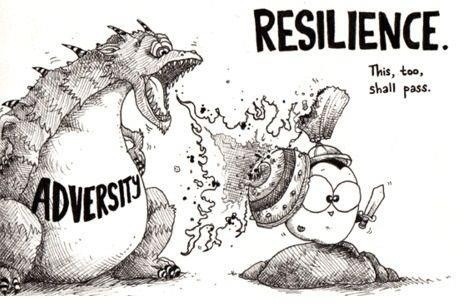By: Dr. Kumar Raka, Editor-ICN Group & Abraham Jimenez
The power of words cannot be underestimated. They constitute the tools that frame the reality of the human life. In a certain way, the moment a thought emerges out of a person in the form of words, it becomes real.
Today, scientists strive to explain reality by measuring, describing, analyzing, comparing, and defining. However, the fact that they do not define yet a phenomenon does not invalidate its existence. On the contrary, their work provides a systematic understanding of our world and – when used in the best interest – enables man to use that knowledge to improve our quality of life.
Such is the case with the concept of ‘Resilience’. Although finding its roots in Latin language and developing into a construct applied in a wide variety of sciences for the last four decades, the phenomenon has characterized populations since the beginning of the history of humankind itself.
What we now articulate as resilience has been built up since ages in illiterate, traditional, tribal communities and societies and has been instrumental in the progressive development of societies in spite of every adversity, such as catastrophes, epidemics and wars. Even ‘lower’ forms of life attest to its existence long before the modern world coined the term.
Humanity has survived and thrived with the ‘capacity to recover quickly’, – as the Oxford dictionary defines ‘resilience’– in the face of misfortunes. There is a general recognition that resilience is not necessarily a new conceptualization. Rather, it is a recently-developed term that already existed as a learning process and passed on through generations. The concept has emerged as a new phenomenon in last four-five decades and has acquired a major attraction amongst scholars of various disciplines due to the inherent meaning, to “bounce back” (Southwick et al., 2014). Derived from Latin word resilio, it was primarily mentioned in Ecology. This ‘bounce back’ (Manyena, 2006; Norris et al, 2008; Paton& Johnston, 2006) gradually became ‘bounce back against all odds’ in psycho-social studies, a few steps ahead to mere survival, a major concern for humanity. Resilience is a positive, progressive, never loosing construct that rightly deserves its place in humanitarian and developmental studies most importantly in Emergency & Disaster Management.
Initially, mental health professionals endeavored to find the faults in children with developmental problems arising from traumatic experiences (Hawkridge & Kraus, 2012). Then research veered to comparing groups of individuals who fared well in the face of adversity against others who floundered. Their findings shifted the emphasis away from deficit-focused orientations toward models centered on positive aims, promotive and protective factors, and adaptive capacities.
Under this framework flourished the description of processes that enable individuals to achieve positive developmental outcomes despite exposure to known threats to adaptation. Soon, it became increasingly evident the pivotal influence of the individual’s interaction with other people and the environment, until the definition included this ‘collectivity’ as necessary for a person to be considered resilient.
Gradually, the horizon of resilience broadened to groups, communities, institutions, societies and nation at large. The moment it was applied to catastrophic events, there was a realization that the disequilibrium in the social structure reduces communities’ capacity to withstand shock sand stresses i.e., resilience.
Since the surge of this paradigm, the world has resolved to commit all resources and efforts to strengthen institutions, create new technologies and infrastructure, as well as improve current systems pursuing to develop societies who are equipped to successfully overcome any hazard and preserve its functionality and structure.
However, the ambition to become a ‘resilient community’ is deriving in an over-emphasis on technology and material resources, neglecting the vitality of the so-called social capital, the very individuals who comprise the society intended to empower in the first place.
Literature
Alexander (2013) has widened the debate on the origins of resilience. He reasons that although many students involved in the study of the robustness of people, objects and systems believe that the term resilience was coined by Holling (1973) in his landmark paper on Systems Ecology in 1973, the concept of resilience is not new. Rather, it has had a long ‘etymological journey’ that dates back to at least the fourth century with its meaning strongly perpetuated in proverbs of St. Jerome (AD347– 420) (Alexander 2013). Yet, far too little attention has been given to examine the resilience of traditional institutions that could potentially increase our understanding of resilience to disasters.
Manyena (2006) provides a dozen definitions of resilience, Bahadur et al. (2013) outlines 16 conceptualizations of resilience and Brand and Jax (2007) outline 10. Using the Hyogo Framework for Action as a guide, Twigg (2007) outlines 167 characteristics of resilient communities. In an extensive survey of literature between the period 1998-2015, we have found 72 different definitions of resilience.
In the present paper, only a few best definitions have been selected and discussed to establish the importance of ‘Resiliency’ in context of ‘The New Paradigm’; as a central, increasingly & widely recognized construct specifically in terms of the mental health perspective shifting towards emergency, disaster and catastrophe management gaining international attention as a revolutionary tool to bounce back against all odds and lead a normal life.
TO BE CONTINUED…




